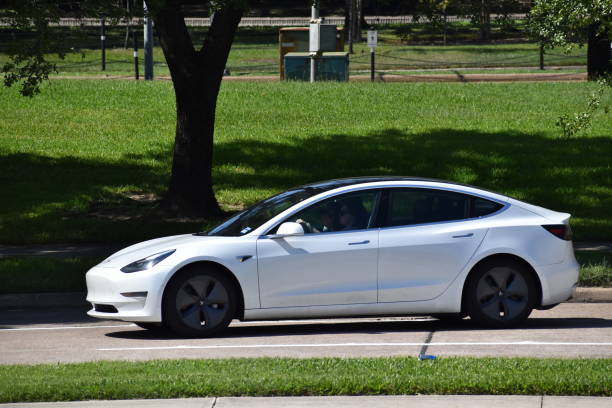The Tesla Model S is a revolutionary electric vehicle known for its remarkable performance, cutting-edge technology, and impressive range. One of the key factors that contribute to its efficiency and performance is its aerodynamic design, specifically its drag coefficient. In this article, we will explore the amazing aspects of the Tesla Model S drag coefficient, its significance, and how it enhances the car’s overall performance.
Contents
Understanding Drag Coefficient: The Basics
What is Drag Coefficient?

The drag coefficient (Cd) is a numerical measure of a vehicle’s aerodynamic efficiency. It quantifies the resistance a car faces as it moves through the air. A lower drag coefficient means the car experiences less aerodynamic drag, which in turn improves its fuel efficiency, performance, and range.
Why is Drag Coefficient Important?
For electric vehicles like the Tesla Model S, minimizing drag is crucial. Reduced aerodynamic drag leads to less energy consumption, allowing the car to travel farther on a single charge. It also enhances the car’s acceleration and top speed by reducing resistance. In essence, the drag coefficient is a critical factor in achieving the high performance and efficiency that Tesla vehicles are known for.
The Amazing Aerodynamics of the Tesla Model S
Unveiling the Design: Form Meets Function
The Tesla Model S drag coefficient is one of the lowest in the automotive industry, boasting a Cd of just 0.208. This is a testament to Tesla’s commitment to designing vehicles that are not only visually stunning but also highly efficient. The sleek, streamlined shape of the Model S is the result of extensive research and development aimed at reducing drag.
Key Design Features
Several design features contribute to the low drag coefficient of the Tesla Model S:
- Smooth Underbody: The Model S has a flat and smooth underbody, which reduces turbulence and drag. This design choice ensures that air flows smoothly beneath the car, minimizing resistance.
- Retractable Door Handles: The flush-mounted, retractable door handles on the Model S not only enhance its aesthetic appeal but also reduce drag. When not in use, the door handles retract into the body of the car, creating a seamless surface.
- Aerodynamic Wheels: The Model S is equipped with specially designed aerodynamic wheels that reduce air resistance. These wheels help to streamline airflow around the tires, contributing to the car’s overall efficiency.
- Rear Diffuser: The rear diffuser of the Model S helps manage airflow as it exits the vehicle. This reduces drag and improves stability at high speeds.
The Impact of Tesla Model S Drag Coefficient on Performance
Enhanced Range: Going the Distance
One of the most significant benefits of the low drag coefficient in the Tesla Model S is its impact on range. With less aerodynamic drag, the Model S requires less energy to maintain speed, which translates to longer distances on a single charge. This is a crucial factor for electric vehicles, as range anxiety is a common concern among potential buyers.
Impressive Acceleration and Top Speed
The low drag coefficient also plays a vital role in the Model S’s impressive acceleration and top speed. By minimizing air resistance, the Model S can accelerate more quickly and achieve higher speeds more efficiently. This is why the Model S is known for its incredible 0-60 mph times and impressive top speeds, rivaling many traditional high-performance sports cars.
Improved Efficiency: Saving Energy
Efficiency is a hallmark of the Tesla brand, and the Model S drag coefficient is a significant contributor to this efficiency. By reducing drag, the Model S maximizes its energy use, ensuring that more of the battery’s power goes towards propelling the vehicle rather than overcoming air resistance. This efficiency is reflected in the car’s long-range capabilities and lower energy consumption.
The Role of Technology and Innovation
Advanced Computational Fluid Dynamics (CFD)
Tesla utilizes advanced computational fluid dynamics (CFD) to design and optimize the aerodynamics of the Model S. CFD simulations allow engineers to analyze and refine the car’s shape, identifying areas where drag can be reduced. This technology-driven approach ensures that the Model S achieves its remarkable drag coefficient.
Wind Tunnel Testing
In addition to CFD simulations, Tesla conducts extensive wind tunnel testing to validate and refine the aerodynamic performance of the Model S. Wind tunnel testing provides real-world data on how the car interacts with airflow, allowing engineers to make precise adjustments and improvements.
Continuous Improvement
Tesla is known for its commitment to continuous improvement, and this philosophy extends to the aerodynamics of the Model S. Over the years, Tesla has made numerous updates and refinements to the design of the Model S, always aiming to reduce drag and enhance performance. This dedication to innovation ensures that the Model S remains at the forefront of automotive efficiency.
The Broader Implications of Low Drag Coefficient
Environmental Impact: Reducing Carbon Footprint

The low drag coefficient of the Tesla Model S has broader implications for the environment. By reducing energy consumption and improving efficiency, the Model S helps to lower the overall carbon footprint of driving. This is particularly important for electric vehicles, as they are often seen as a key component of efforts to combat climate change.
Setting Industry Standards
The impressive drag coefficient of the Model S sets a benchmark for the automotive industry. It challenges other manufacturers to prioritize aerodynamics and efficiency in their designs. As more automakers strive to match or exceed Tesla’s achievements, the entire industry moves towards more efficient and environmentally friendly vehicles.
Consumer Benefits: Cost Savings
For consumers, the low drag coefficient of the Model S translates to cost savings. Improved efficiency means lower energy consumption, which can reduce the cost of charging the vehicle. Additionally, the enhanced range and performance of the Model S make it a more practical and enjoyable vehicle to own and drive.
Conclusion: Embracing the Future of Automotive Efficiency
In conclusion, the Tesla Model S drag coefficient is a testament to the power of innovation and design in achieving remarkable efficiency and performance. The low drag coefficient of the Model S enhances its range, acceleration, and top speed, making it one of the most impressive electric vehicles on the market.
Through advanced technology and a commitment to continuous improvement, Tesla has set a new standard for aerodynamic efficiency in the automotive industry. The benefits of the Model S’s low drag coefficient extend beyond individual performance, contributing to a more sustainable and environmentally friendly future. As we embrace the future of automotive efficiency, the Tesla Model S stands as a shining example of what can be achieved through dedication, innovation, and a passion for excellence.





